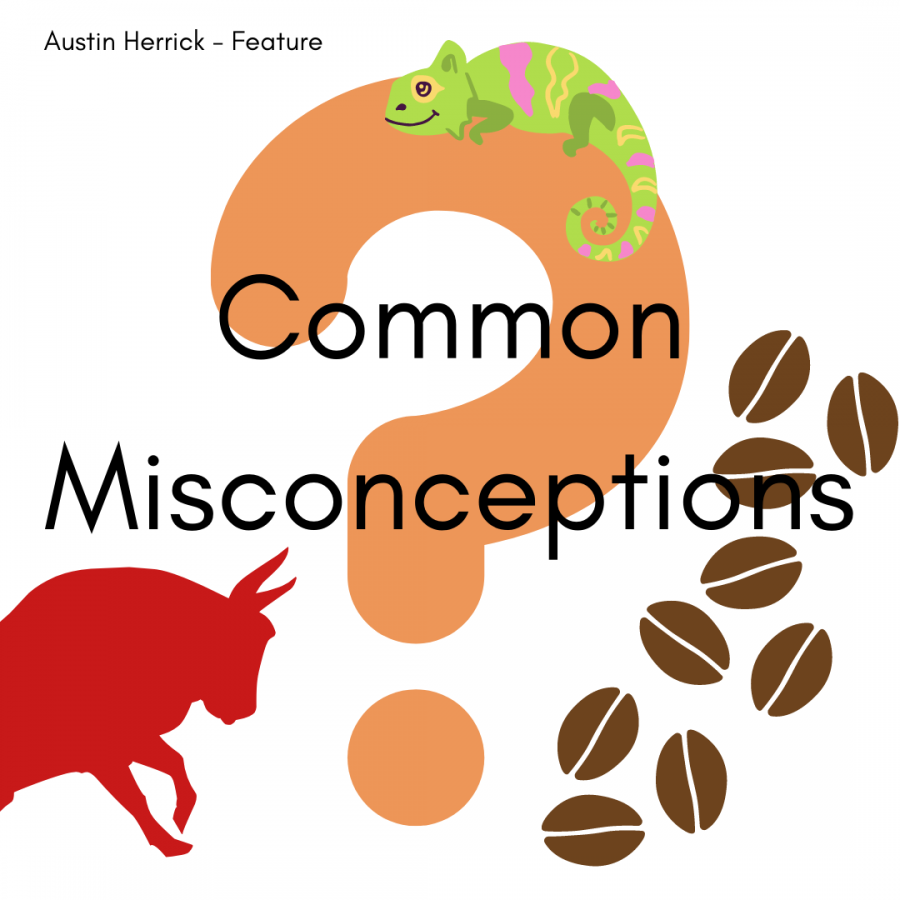Common Misconceptions that you may believe in
Common misconceptions are just what they say they are, common in society. They are an inaccurate belief based on facts and/or evidence that is faulty. Do you believe in any of these misconceptions, don’t worry if you do, as most of America believes in these misconceptions. From if bulls are aggravated by the color red to coffee coming from berries, we will discuss the most popular common misconceptions in this article with representatives from both students and teachers. You will be surprised by the answers.
A common belief among Americans is that coffee comes from beans but they actually come from berries. When asked if they think coffee comes from berries our student and teacher representatives said this. Steven Amrhein said,“No, because they are called coffee beans.” SHS History teacher, William Wehrs, agreed saying, “No, because I think of cocoa beans.” The reason many Americans believe in this misconception is because the seeds of the berry that coffee comes from look like beans. It doesn’t help that all coffee companies market this to the general public.
Another common misconception is that bears go to sleep through winter. It is not true, bears actually go into a deep sleep called a torpor. In this state bears will still go and drink water and readily react to external stimuli. When asked if they think that bears hibernate all winter our representatives had this to say. Steven said, “Yes, because I have always been told that,” while Wehrs disagreed saying, “No, it seems biologically impossible.” This myth most likely comes from a misunderstood version of what a torpor is. Just like this next misconception.
Everyone knows that chameleons can change colors just by thinking about it, but most do not know why. The belief that we have been taught is that they change colors to match their surroundings, while the real answer is that they change color based on their mood and temperature. When asked if you think chameleons change color to match their surroundings we have another round of varied answers. Steven responded with, “Yes, because it had not been disproven to me yet,” while Wehrs disagreed saying, “No, because I researched it.” This belief is not totally based in fiction however, as chameleons can blend into their surroundings just not with every color of the rainbow. If you take a chameleon that normally lives in the high green trees of the Amazon and put them on the floor of the Amazon, they would not be able to blend due to their natural habitat.
Why do we believe in these misconceptions if we are just one Google search away from knowing the true answer? It’s because it creates a more vivid story. A chameleon being able to turn into any color is a better story than changing colors based on temperature. A bull only charging when it sees a cape as red as blood is fantastical while the real story of it only charging when something moves. If you don’t have that information the world seems like a story straight out of a fantasy novel. As Mr.Wehrs said, “This is why history is important, it teaches critical thinking.”












